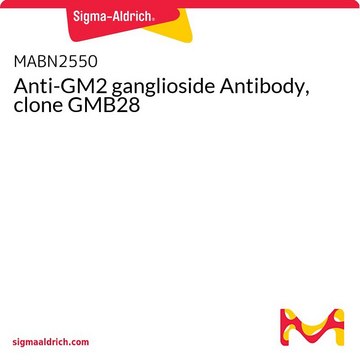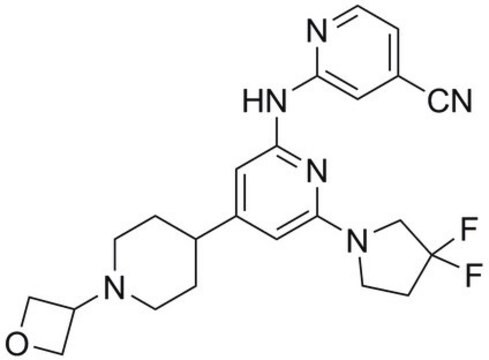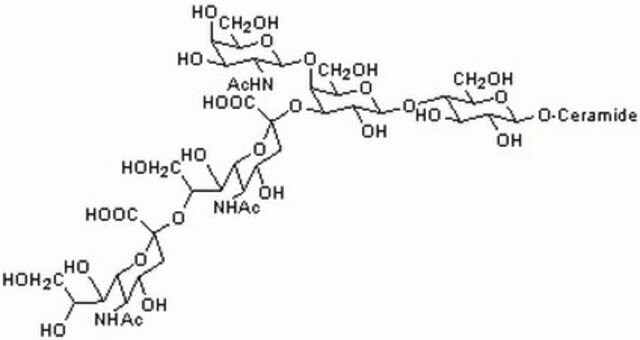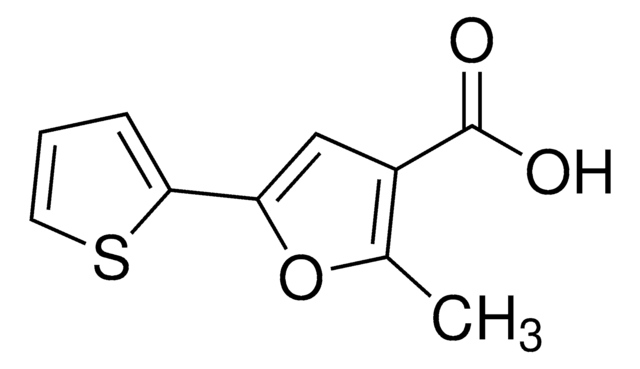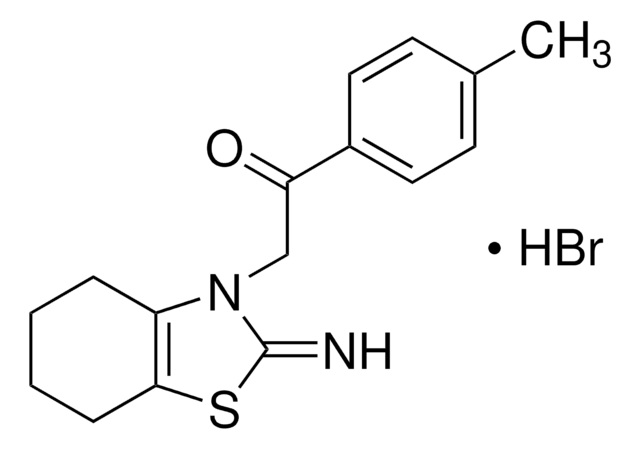345759
Anti-Ganglioside GM₂ Rabbit pAb
liquid, Calbiochem®
Sign Into View Organizational & Contract Pricing
All Photos(1)
About This Item
UNSPSC Code:
12352203
NACRES:
NA.41
Recommended Products
biological source
rabbit
Quality Level
antibody form
serum
antibody product type
primary antibodies
clone
polyclonal
form
liquid
does not contain
preservative
species reactivity (predicted by homology)
all
manufacturer/tradename
Calbiochem®
storage condition
OK to freeze
avoid repeated freeze/thaw cycles
isotype
IgG
shipped in
wet ice
storage temp.
−20°C
target post-translational modification
unmodified
General description
Anti-Ganglioside GM₂, rabbit polyclonal recognizes ganglioside GM₂ in a wide variety of species. It is validated for use in ELISA and TLC immunoblotting.
Rabbit polyclonal antibody supplied as undiluted serum. Recognizes the GM2 ganglioside.
Recognizes ganglioside GM2.
Immunogen
purified, human ganglioside GM₂
Application
ELISA (1:200)
TLC Immunoblotting (1:100, colorimetric)
TLC Immunoblotting (1:100, colorimetric)
Warning
Toxicity: Standard Handling (A)
Other Notes
Does not cross-react with other carbohydrate epitopes. Variables associated with assay conditions will dictate the optimal working dilution.
Yoshino, H., et al. 1993. J. Neurochem. 61, 658.
Kusunoki, S., et al. 1987. Neurology 37, 1795.
Kusunoki, S., et al. 1987. Neurology 37, 1795.
Legal Information
CALBIOCHEM is a registered trademark of Merck KGaA, Darmstadt, Germany
Not finding the right product?
Try our Product Selector Tool.
Storage Class Code
10 - Combustible liquids
WGK
WGK 1
Flash Point(F)
Not applicable
Flash Point(C)
Not applicable
Certificates of Analysis (COA)
Search for Certificates of Analysis (COA) by entering the products Lot/Batch Number. Lot and Batch Numbers can be found on a product’s label following the words ‘Lot’ or ‘Batch’.
Already Own This Product?
Find documentation for the products that you have recently purchased in the Document Library.
Yuehong Chen et al.
Journal of molecular medicine (Berlin, Germany), 96(12), 1359-1373 (2018-10-21)
Tay-Sachs disease (TSD) is a lethal lysosomal storage disease (LSD) caused by mutations in the HexA gene, which can lead to deficiency of β-hexosaminidase A (HexA) activity and consequent accumulation of its substrate, GM2 ganglioside. Recent reports that progranulin (PGRN)
Our team of scientists has experience in all areas of research including Life Science, Material Science, Chemical Synthesis, Chromatography, Analytical and many others.
Contact Technical Service

